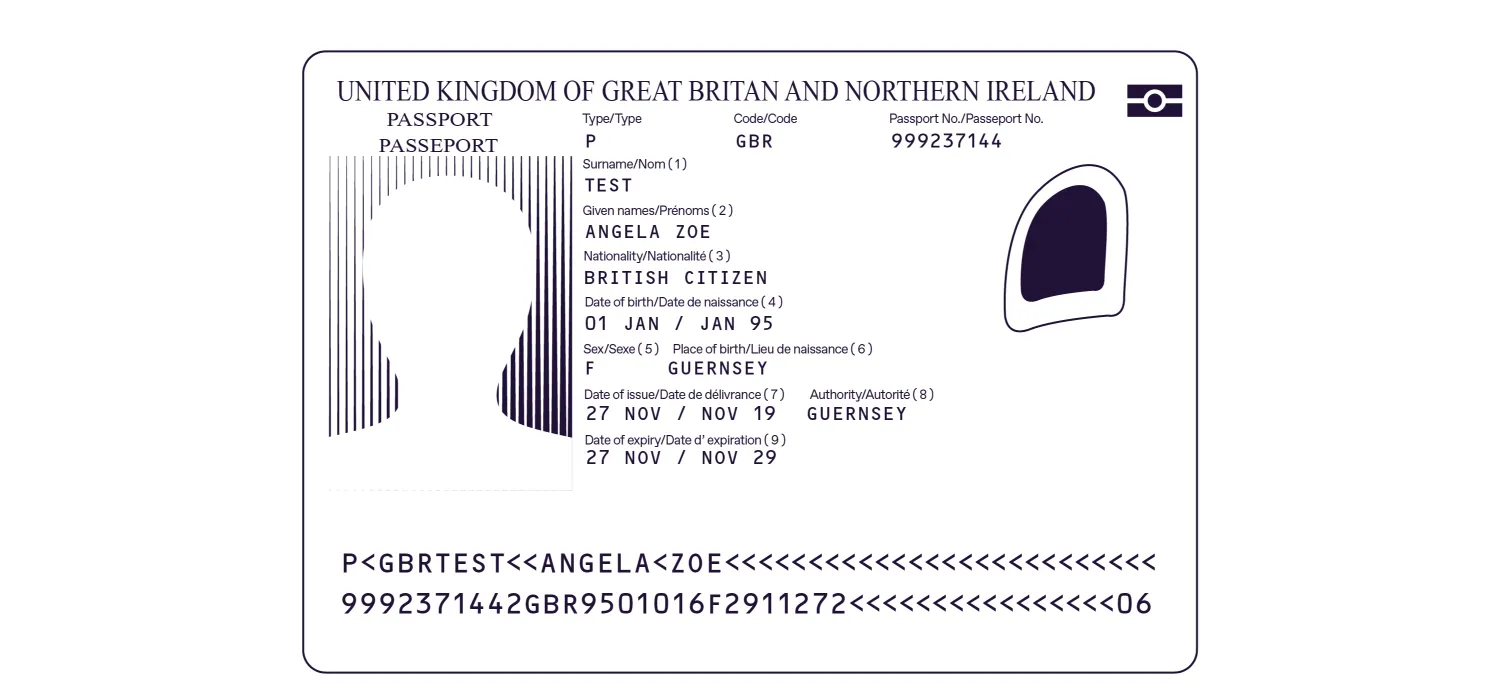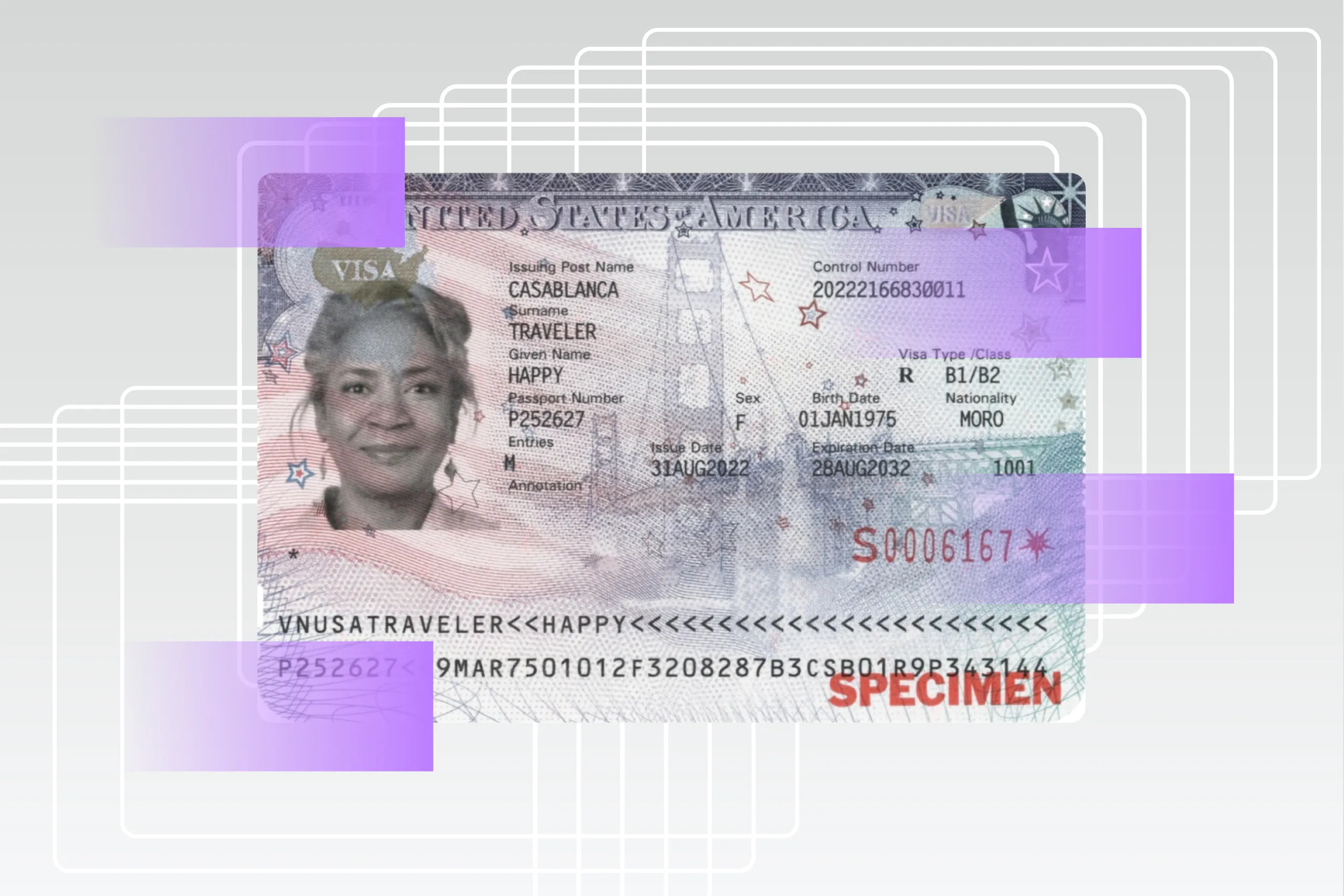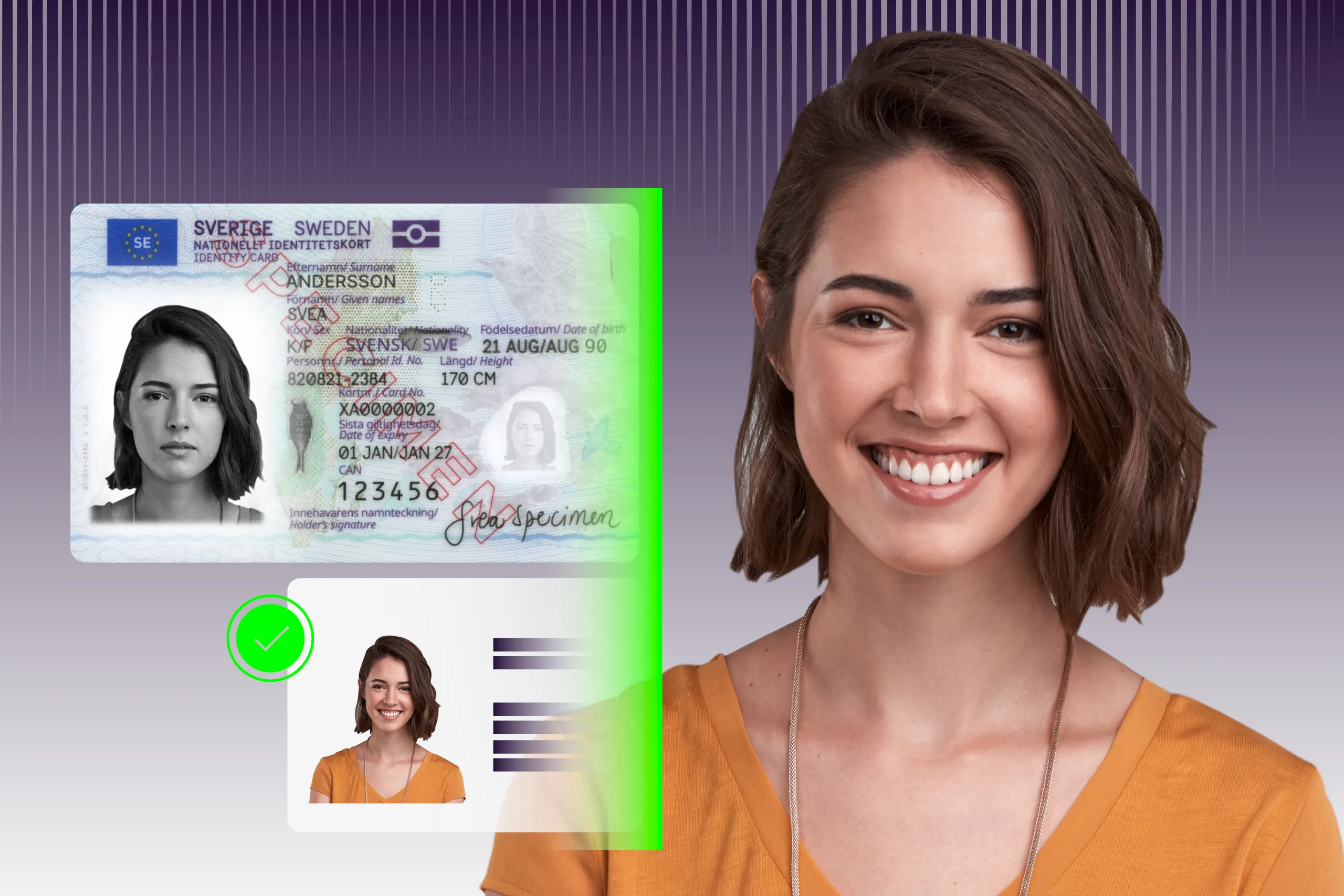Updated December 17, 2025
In 2016, citizens of the United Kingdom made a choice that changed the course of the country for decades. Namely, the majority of British voters chose to withdraw from the European Union.
Brexit affected many areas of the UK’s political and economic life. Identity documents are among them.
The challenges of processing British IDs
The United Kingdom of Great Britain and Northern Ireland has a complex territory structure. In addition to the main parts, comprising England, Scotland, Wales, and Northern Ireland, there are also self-governing lands linked to the UK historically and constitutionally, including three Crown Dependencies and 14 British Overseas Territories.
Despite these lands being considered territories rather than official parts of the country, the UK is responsible for them, and they are closely associated with the legacy of the British Crown. Importantly, this connection can be seen in ID documents as well.
Let’s discuss what else makes British IDs difficult to verify.
Pre-Brexit documents in circulation
After the official withdrawal from the EU on January 31, 2020, the UK updated all its identity documents slightly (or sometimes significantly), adjusting their layout and security features.
Previously issued in accordance with EU standards, British driver’s licenses, passports, visas, etc. got a fresh look, while keeping some pre-Brexit components.
Here are some examples of such changes.
The key difference between driver’s licenses from these two periods of British history is the replacement of the EU flag emblem on the top left with the UK inscription.

Interestingly, the post-Brexit document update has two valid versions: one issued between January and December 2021, and another issued after December 2021, which primarily differ in background pattern design.
The new British passport features a traditional blue cover, unlike the burgundy seen on most European documents. Additionally, the heading "BRITISH PASSPORT" is now displayed at the top.
In 2025, the country updated its travel document once again. The most notable change is the coat of arms, which now features King Charles instead of Queen Elizabeth II. More specifically, the updated passport cover shows the Tudor Crown, which differs in design from the St. Edward's Crown used during the Queen’s reign.

The covers of British passports from the 2015, 2020, and 2025 series show a shift in design. The latest versions feature a blue cover with updated inscriptions.
Although the UK never signed the Schengen Agreement, it used the Schengen Information System and participated in traveler data exchange as part of the EU. The country also issued visas with a Schengen-compliant design, which was downgraded to internal standards after Brexit.
As part of standardizing all identification documents in the country, British authorities also updated the residence permits. They now differ from previous versions that were issued according to EU requirements for this type of document.
The challenge is that “older” versions of British driver’s licenses, passports, visas, and residence permits are still in circulation, since these documents are valid up to 10 years after issuance. This means that companies should be ready to process both pre- and post-Brexit British IDs when verifying the identities of customers from the UK.
A variety of driver’s licenses
A driver’s license is the most common ID document for many British citizens, and is often used to verify age or identity in banks, tobacco and alcohol shops, and other non-driving contexts.
The document includes standard data groups:
Name
Date of birth
Validity dates
Address
Vehicle categories the holder is entitled to drive
etc.
Of great interest is the unique 18-character driver number, which contains more personal details than the visual inspection zone (VIZ). Some identity verification (IDV) solutions, including Regula Document Reader SDK, can decode this information and match it against the data in the VIZ.
Let’s decipher the code from the specimen above, which looks like this: MORGA753116SM9IJ35.
| The code | Transcript | The full data from the VIZ |
|---|---|---|
| MORGA | The first five characters of the last name | Morgan |
| 7 | The decade digit from the year of birth | 1976 |
| 53 | The month of birth; if the holder is female, the first digit is incremented by 5 | 03 |
| 11 | The day of birth | 11 |
| 6 | The year digit from the year of birth | 1976 |
| SM | The first letter of the first and middle name; if the holder doesn't have a middle name, the second character is 9 | Sarah Meredyth |
| 9 | The arbitrary digit | - |
| IJ | The check characters | - |
| 35 | The license issue number | - |
In driver’s licenses from Northern Ireland, an 8-digit number can be found. Usually, it is randomly constructed and can’t be verified the same way. Also, documents issued in this part of the country have a bit of a different design.
When it comes to the documents of the British Overseas Territories, there are not only design distinctions. For example, the Cayman Islands issuing bodies also specify the drivers’ height, eye and hair color, sex, and information about disabilities. By the way, this practice aligns with US standards for driver’s licenses.

The Cayman Islands, located in the western Caribbean Sea, issue US-like driver’s licenses with more detailed information about the holder.
In the UK, learner drivers can obtain provisional licenses. They have a distinct layout and an “L” emblem on the top left.

Provisional driver’s licenses are always green.
This type of license is valid for driving vehicles of certain categories, such as a moped, under specific conditions and speed limits. For example, in Northern Ireland, learner drivers can’t drive faster than 45 mph (≈72 km/h).
Three valid passport series
A pre-Brexit British biometric passport from 2015 significantly differs from the latest versions from 2020 (shown in the video below) and 2025. Many residents still have the older series document.
One distinctive feature of the 2020 series is the inclusion of four portraits of the holder, which are presented in various forms, such as a ghost image, laser engraving, and embedded within the Optically Variable Device (OVD).
While these features can be primarily checked on-site using lighting methods, dynamic security features such as the hologram in the VIZ are easily verified during online ID document liveness checks.
The 2025 series has been called the “most secure British passport ever produced” by the Home Office. It includes advanced anti-forgery features, such as redesigned holographic elements and translucent effects on the datapage.

The 2025 UK passport features stronger security, including redesigned elements on the datapage.
Passports of British nationals residing in the Overseas Territories and Dependencies include all these updates. However, the name of the territory is specified on the cover and on the second page.
Interesting fact: Since April 2024, Bermuda's travel documents have used the BMU passport code, replacing the previous GBR code.


British Overseas Territories issue passports with the same design, featuring the name of the territory on both the cover and the personal data page. Shown here are 2020 series documents (cover and datapage) issued to residents of Bermuda and Guernsey.
Domestic ID cards
The identification card project in the UK, introduced in 2009, was soon suspended. Although a specimen was developed, British national ID cards were never issued en masse.
While a large part of British residents use their driver’s licenses for identification purposes, there are other substitutes for ID cards across the UK.
Citizen Cards are an example. They are proof-of-age cards available to children and teenagers. Interestingly, the authority behind the issuance of these documents is not the government but a non-profit entity. Nevertheless, Citizen Cards are recognized by officials and businesses, including police, retailers, and practitioners.
There are Citizen Cards for three age groups:
Under 16
16-17
18 and over

The 2021 series of British citizen cards (left) was updated in 2023 (right), featuring changes in font styles and layout design.
This photo ID contains the holder’s name, date of birth, personal number, and validity information, and is widely used as a proof of age enabling bearers to buy age-restricted goods. Additionally, a Citizen Card is a valid proof of identity for voting, taking domestic flights, entering pubs and clubs, attending festivals, and many other situations. That means that this type of British national ID card can be submitted online as well.
The Overseas Territories also issue their own domestic IDs. For instance, in 2022, the Cayman Islands authorities announced plans to begin issuing identity cards for use within the land. ID cards will be available to both minors and adults. The pilot program is expected to be rolled out to the entire population in 2025.

The Cayman Islands is one of the British Overseas Territories planning to issue national identity cards soon.
Some local identity cards, such as those issued to residents of the Turks and Caicos Islands, are even more powerful than passports. For example, islanders with ID cards can vote, own businesses, and work in any occupation, unlike holders of local passports, who can only reside there as British Overseas Territory citizens.

The ID card of the Turks and Caicos Islands is a domestic document with more authority than a passport.
Other territories rely on non-physical domestic ID documents. For example, the Jersey governmental bodies launched a Digital ID program called JerseyMe. This virtual identity is required to access online government services, including completing tax returns, changing contact details, obtaining or renewing registration cards, and the like. To set up a JerseyMe account, residents need to conduct online identity verification using their regular passports.
How to effectively process British IDs
To sum up, any identity verification system for documents issued by the UK government should have three major components:
A large number of document specimens as references. It’s critical to have various ID templates from the mainland and the territories to correctly verify pre- and post-Brexit British documents. For instance, Regula provides their customers with the most comprehensive document template library in the world; it is regularly updated, and now consists of over 16,000 items from 254 countries and territories.
An understanding of specific security features and data groups. While many British ID documents, such as passports or visas, are compliant with ICAO standards, they contain components, such as a unique driver number, that your IDV solution should be able to handle.
NFC chip verification. Like the majority of EU documents, British passports and residence permits are biometric IDs with an embedded chip, and are often verified through mobile and web apps. Your IDV solution, whether hardware or software, should include features for complete RFID chip verification in accordance with ICAO 9303 and related ISO standards.
Partner with Regula to achieve more in online and on-site verification of British ID documents. Learn more about our products or book a call with one of our representatives to discuss your business needs.





